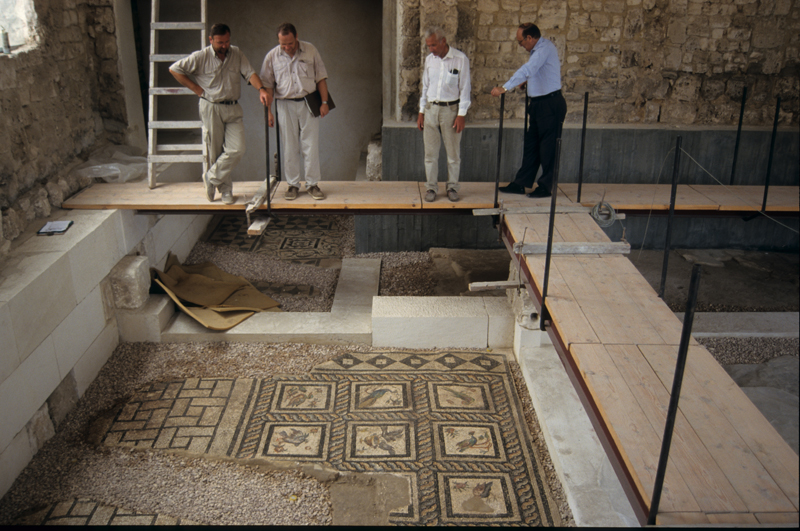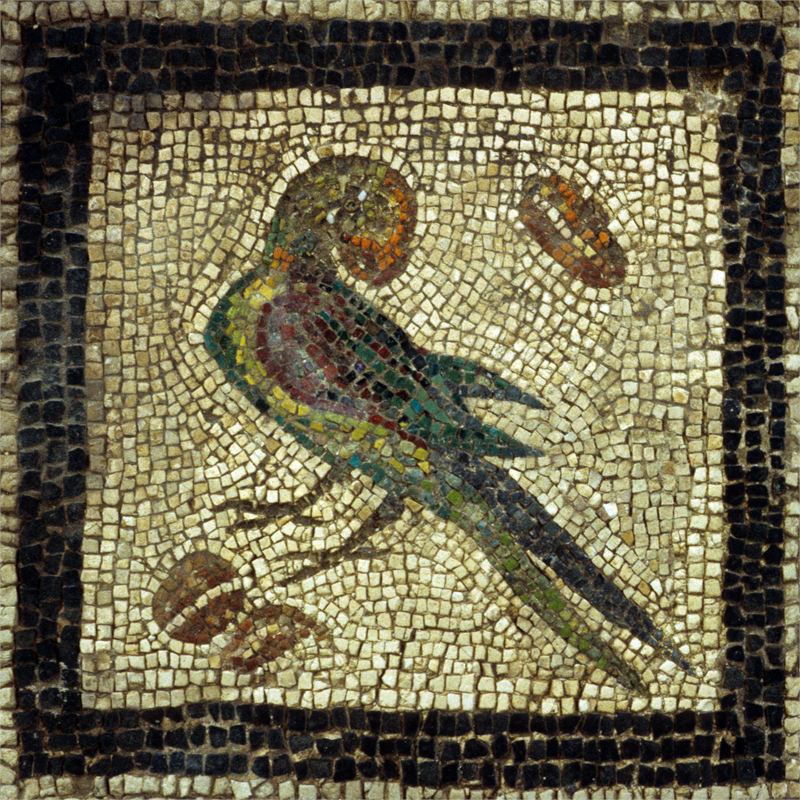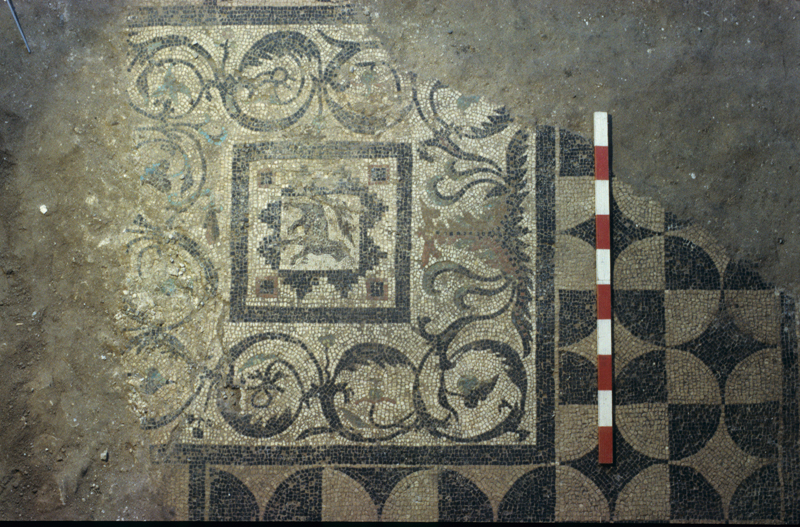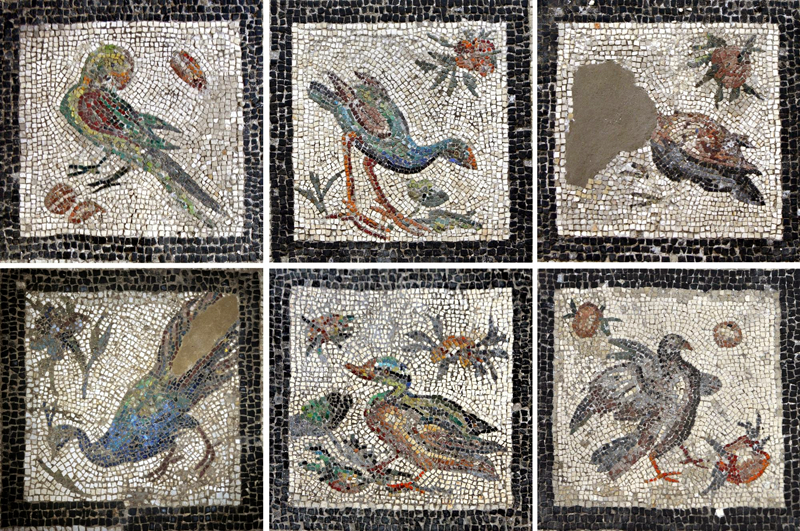- EraRoman
- Project DirectorDr. Wojciech Kolataj
- LocationAlexandria
- AffiliationPolish Center of Archaeology|Polish-Egyptian Preservation Mission
- Project SponsorUSAID
- Project Dates1998-2000
- Project ImplementerARCE
Nestled in the heart of Alexandria along the Mediterranean coast, the Kom el Dikka neighborhood houses some of Egypt’s best-preserved urban Roman ruins. An aptly named archaeological park covers nearly 40,000 square meters and slopes well below present-day street level. The park features an impressive array of residential and commercial remains primarily from Alexandria’s late Roman period – the fourth through seventh centuries CE – including a sprawling public bathhouse, a gymnasium and a theater with a central stage and seating in 13 tiered, carved marble rows.
Three villas, which sit in the park’s residential district along the eastern elevation, date to the early Roman period, the first through third centuries. Many of the villas’ materials were recycled over time, and the homes have little left of their original structures. However, at least one of the villas retained its mosaic floors and original floorplans over the centuries. In 1998, the American Research Center in Egypt – in collaboration with the U.S. Agency for International Development, the Polish-Egyptian Preservation Mission, the Polish Center of Archaeology and Egypt’s Supreme Council of Antiquities – began work to conserve the mosaics in the residence known as the Villa of the Birds, named for the images of bird species in one of its more prominent mosaics. The mosaic’s artistic depiction of birds is a unique feature and one of the few figural mosaics from Alexandria’s Roman period to survive to the present day.
Although there had been regular large-scale excavation of Kom el Dikka since the 1950s, it remained crucial to conduct a focused re-excavation of the villa’s flooring and courtyard, as well as two adjoining late Roman/Byzantine buildings at the start of the project. The excavation cleared built-up debris that covered areas of the mosaics and revealed the extent of the decorated flooring. It also mapped the boundaries and wall joins of the original structure to provide a timeline of changes to the villa and determine the purpose of individual rooms. Excavation work officially began on May 1, 1998 and months later had uncovered a clearer picture of the original size of the villa and the functions of some of its rooms.
The cleared flooring covered an area of 1,184 square feet (110 square meters). Project director Wojciech Kolataj estimated this space constitutes only the eastern and northern wings of the house, and the original villa was much larger. One of the first rooms identified was the triclinium – or dining room – a large area that opens directly onto the courtyard. Also identified were a cubiculum – a bedroom accessible via the courtyard – and a small washroom in the eastern wing. The masterstroke of the Villa of the Birds, though, is the seven floor mosaics, which display a wide range of stylistic motifs and color schemes indicating that at its peak, the house embodied lavish Greco-Roman design and architecture.
The mosaic for which the villa is named is in a bedroom, composed of nine framed panels bordered with the intricate, braided guilloché technique. Two of the images are too damaged to decipher, but the remaining seven panels depict a duck, a quail, a parrot, a purple gallinule, a peacock and a pair of pigeons drinking from a cup. Conservators revealed a mix of white, yellow, gray and black marble and limestone on the mosaic, as well as multicolored glass paste and delicate glass beads for the eyes of the birds.
Given Alexandria’s humid summers and rainy winters and the sloped topography of the site, the elements posed a major risk to the Villa of the Bird’s newly conserved floor mosaics. Today, glass panels fill the spaces between the surrounding Byzantine-period walls, and supporting beams provide the foundation for the corrugated iron sheet roof that rests above the villa. An elevated walkway sits above the mosaic floors to allow visitors an unobstructed, immersive view of the mosaics and floorplan without posing risks from foot traffic or human impact.
The project concluded in 2000, leaving several conserved and protected floor mosaics in the Villa of the Birds. Today, visitors to the Kom el Dikka archaeological park can spend a quiet afternoon enjoying Egypt’s finest residential Roman remains tucked away in modern Alexandria.




